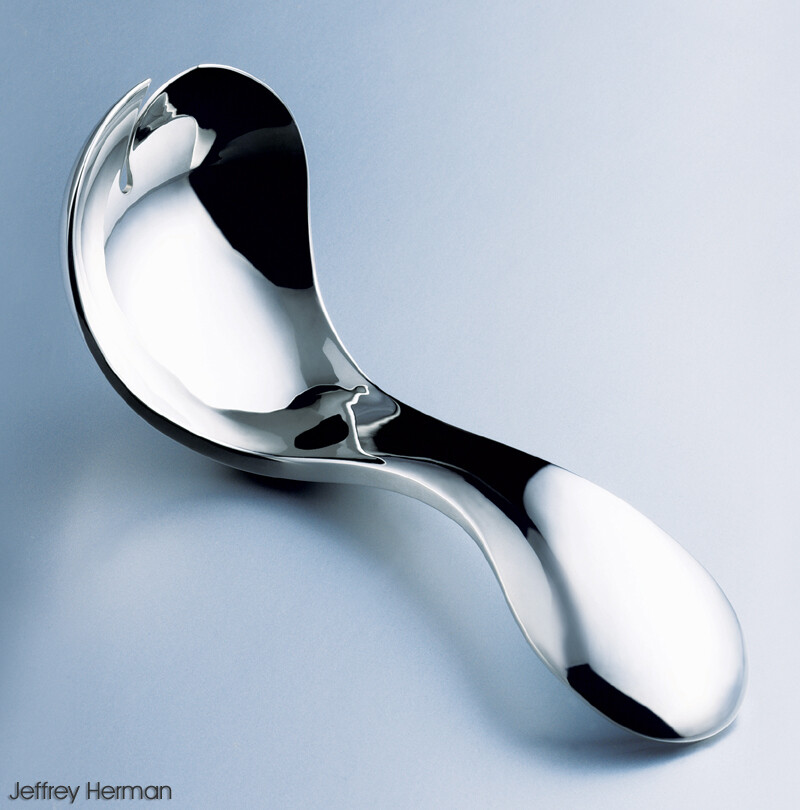In response to Mark in RI’s commentary on this article: Argentium or
sterling? I completely disagree with Mark’s statement that ‘for a
beginner Argentium is more difficult to solder than traditional
sterling’, and genuinely hope that this does not discourage any
beginner from working with this fabulous metal.
I am one of those beginners! My day job is in computer software and
I had been looking for something a little less stressful for a
retirement business. Because jewelry making appeals to my love of art
and my need to create something beautiful, I decided to try a few
classes to see if this was a good career path for me.
My first exposure to jewelry making was at a workshop taught by Ronda
Coryell, which happened to focus on beginning Argentium techniques.
By the end of the first day, I had a few completed pieces of jewelry,
and by the end of the second day, I had completed two beautiful
wedding rings (both made with Argentium silver fused with gold).
Ronda pointed out that if I had attempted to make the same rings with
traditional sterling silver, I would have had to solder each tiny
gold piece onto the ring one by one. that would have taken forever!
Being in the computer industry, I am very familiar with the concept
that in order to join two pieces of metal together, you must solder
them. But wow, much to my amazement, this is no longer necessarily
true with Argentium!
So, after the workshop that first day, one of Ronda’s students asked
how strong the fused bond would be from fusing an Argentium seam.
Ronda asked us if we wanted to try a challenge that we
enthusiastically accepted. Two identical rings were made, one with
traditional sterling silver that was soldered and one with Argentium
where the seam was fused. One of the students first tried to stretch
the soldered ring and it snapped at the seam right away (it didn’t
stretch at all)… she then took the Argentium ring and was able to
stretch the Argentium ring far beyond the tradition sterling ring
size until it reached the point where it would no longer stretch
(never breaking apart). Beyond that you can fuse the metal in the
first place, this was clear evidence to me how superior Argentium is
to traditional sterling silver and became an instant fan! I was
hooked from this experience and decided to pursue jewelry making as
my next career path and immediately purchased a couple of Ronda’s
excellent training DVDs, which I could watch and replay while
practicing her techniques.
I then wanted to get more serious about learning all I could about
jewelry making, so I proceeded to sign up for a couple of classes. I
took a basic fabrication class where we worked entirely with
traditional sterling and learned a lot of varying techniques in this
class, including soldering with traditional silver. I took another
beginning jewelry class, where we attempted to make several rings. I
actually found both of these classes to be very frustrating and was
not able to come home with completely finished pieces from either
class, where as I had a real feeling of accomplishment from taking
Ronda’s Argentium workshop. I felt that the soldering experience with
traditional sterling was a sharp contrast to the ease I felt fusing
or soldering Argentium. I would have to say that the time investment
for making an Argentium piece is so vastly more efficient than
working with traditional sterling and I feel as though Argentium is a
metal for the NEW AGE where when working with traditional sterling, I
felt like I was in the dark ages.
Mark’s claim that ’ it is still a relatively new product and has a
lot of zealots that tout its virtures virtues many of them are funded
by the agentium Argentium industry’ is obviously only his opinion,
because as far as I am concerned, there are a lot of zealots because
it is such an amazing metal! I think that Mark obviously has a
background in traditional sterling where his opinion is biased and
traditional sterling is his comfort zone. It is true that the
techniques in using the two metals are indeed different, but once you
’get it’, Argentium IS JUST SO EASY to work with. I guess that I was
fortunate enough that my first experience with jewelry making was
from one of the most knowledgeable Argentium educators there is,
Ronda Coryell. I honestly could go on and on about the other
advantages of Argentium but then Mark might accuse me of being a
zealot! Let Mark know that I am funded by my day job in computers
still, but wanted to write this so others will not be dissuaded by
Mark’s negativity on Argentium. So now I am headed back to Austin to
take more classes from Ronda at her school and am dedicated to
learning more about Argentium fabrication techniques. Beginner & fan
of Argentium, Jan
